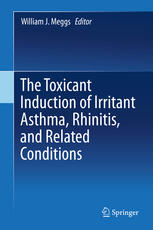

Most ebook files are in PDF format, so you can easily read them using various software such as Foxit Reader or directly on the Google Chrome browser.
Some ebook files are released by publishers in other formats such as .awz, .mobi, .epub, .fb2, etc. You may need to install specific software to read these formats on mobile/PC, such as Calibre.
Please read the tutorial at this link: https://ebookbell.com/faq
We offer FREE conversion to the popular formats you request; however, this may take some time. Therefore, right after payment, please email us, and we will try to provide the service as quickly as possible.
For some exceptional file formats or broken links (if any), please refrain from opening any disputes. Instead, email us first, and we will try to assist within a maximum of 6 hours.
EbookBell Team

4.8
14 reviewsUntoward reactions to environmental chemicals, particularly when a subject reports difficulties with exposures to chemicals of diverse classes involving more than one organ system, have been poorly understood and an area of great controversy. Studies of airway inflammation induced by respiratory irritants have established neurogenic inflammation as the mechanism for irritant asthma and rhinitis. Remodeling of the airway after an acute irritant exposure can lead to a heightened sensitivity to irritants that persists. Recognition that rhinitis, while sometimes regarded as a trivial disease, is associated with extra-airway manifestations such as fatigue and disturbances of sleep, mood, and cognition, further elucidates how chemical exposures can be serious for susceptible individuals.
This book reviews current scientific understanding of irritant airway inflammation and related conditions, including cardiovascular effects of particulate exposures, airborne contact dermatitis and irritant dermatitis, and the brain as a target organ for both allergic and irritant reactions. It is essential reading for physicians and other healthcare workers caring for patients with environmental intolerances. Allergists, toxicologists, occupational and environmental physicians, and pulmonologists will find the materials particularly valuable. Patients and advocates for those with chemical intolerances will also find the book of interest.